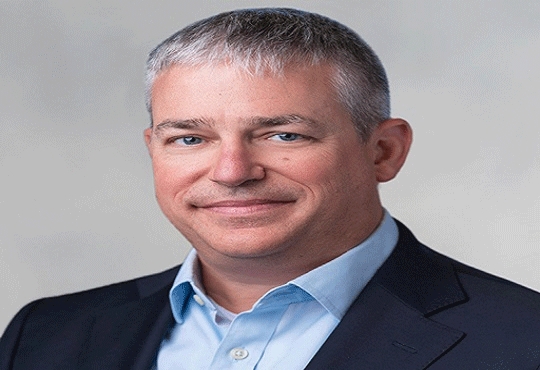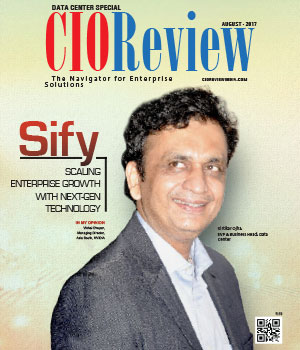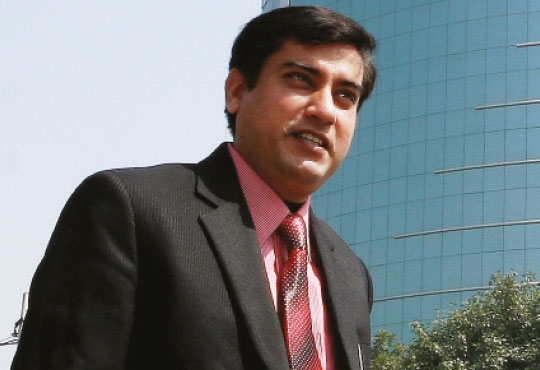
VM Turbo to Operate the Software-Defined Data Center
CIOReview Team | Saturday, 06 June 2015, 07:46 IST
 Software-defined data centers have aspired to bring software-enabled optimization that exists at all layers of the stack into the physical data center, giving adopters the ability to manage those assets in a way that correlates to the workloads utilizing them. Observing server virtualization trends over the last few years, one can say that Software-defined data centers have taken the lead. They are considered to be the next stage of evolution for virtualization and cloud computing where the features compute, storage, network, and security are virtualized and delivered as a service. Here control of that data center is fully automated and managed by intelligent, policy-driven software. However for SDDC to be successful, organizations not only have to automate as much of the data center as possible, they must also trust that process, Says David Marshall, of InfoWorld. The company VmTurbo releases “software-driven control" for the virtual data center. "Being able to define your data center in software is really the first step, knowing how to leverage all of those software levers to make sure our data centers and clouds are operating efficiently, while assuring application service levels is where VMTurbo comes in.", says Shmuel Kliger, founder and president of VmTurbo. VMTurbo takes an interesting approach to manage and control the virtualized data center. It essentially leverages economic principles to control the environment in a desired state where workload demand is best satisfied by the underlying infrastructure supply. VmTurbo triggers the necessary actions to drive the data center into a healthy equilibrium and continuously keeps it in that state. Customers typically see increases in infrastructure utilization of 30 percent or more, while preventing many problems from happening in the first place. “The company has further added a new "supply chain" view to provide joint operations teams with a consolidated understanding of the application workloads, their relationships to the underlying compute, fabric and storage layers and the necessary actions to move them into a healthy state. “To adopt a true cloud operating model, we need to be able to treat our data center resources as elastic, providing the right amount of resources when and where we need them," Kliger said. However last year, VMTurbo took this concept a step toward the public and hybrid cloud, with support for Amazon AWS and Microsoft Azure, VMTurbo starts to embrace the hybrid cloud and use cases like cloud bursting that means understanding when workloads can be moved to the public cloud, and when they should be moved back. While VMTurbo doesn't move the workloads back and forth to the public cloud today but it can work with other vendors to provide this capability, leveraging VMTurbo's open APIs to help guide those decisions. Even though this concept might still be an emerging term and practice, there is no denying its current prowess and expected future success.
Software-defined data centers have aspired to bring software-enabled optimization that exists at all layers of the stack into the physical data center, giving adopters the ability to manage those assets in a way that correlates to the workloads utilizing them. Observing server virtualization trends over the last few years, one can say that Software-defined data centers have taken the lead. They are considered to be the next stage of evolution for virtualization and cloud computing where the features compute, storage, network, and security are virtualized and delivered as a service. Here control of that data center is fully automated and managed by intelligent, policy-driven software. However for SDDC to be successful, organizations not only have to automate as much of the data center as possible, they must also trust that process, Says David Marshall, of InfoWorld. The company VmTurbo releases “software-driven control" for the virtual data center. "Being able to define your data center in software is really the first step, knowing how to leverage all of those software levers to make sure our data centers and clouds are operating efficiently, while assuring application service levels is where VMTurbo comes in.", says Shmuel Kliger, founder and president of VmTurbo. VMTurbo takes an interesting approach to manage and control the virtualized data center. It essentially leverages economic principles to control the environment in a desired state where workload demand is best satisfied by the underlying infrastructure supply. VmTurbo triggers the necessary actions to drive the data center into a healthy equilibrium and continuously keeps it in that state. Customers typically see increases in infrastructure utilization of 30 percent or more, while preventing many problems from happening in the first place. “The company has further added a new "supply chain" view to provide joint operations teams with a consolidated understanding of the application workloads, their relationships to the underlying compute, fabric and storage layers and the necessary actions to move them into a healthy state. “To adopt a true cloud operating model, we need to be able to treat our data center resources as elastic, providing the right amount of resources when and where we need them," Kliger said. However last year, VMTurbo took this concept a step toward the public and hybrid cloud, with support for Amazon AWS and Microsoft Azure, VMTurbo starts to embrace the hybrid cloud and use cases like cloud bursting that means understanding when workloads can be moved to the public cloud, and when they should be moved back. While VMTurbo doesn't move the workloads back and forth to the public cloud today but it can work with other vendors to provide this capability, leveraging VMTurbo's open APIs to help guide those decisions. Even though this concept might still be an emerging term and practice, there is no denying its current prowess and expected future success.
CIO Viewpoint
India and its Data Center Advancements
By By Michael Cantor, CIO, Park Place Technologies
How AI/Machine Learning can Revamp Data Centers...
By Piyush Kumar Chowhan, CIO and Vice President, Arvind Lifestyle Brands Limited
By Sanjay Chowdhry, CIO, Hamdard WAKF Laboratories
CXO Insights
Why A Data First Approach Could Be Your...
By Geetha Ramamoorthi, Managing Director, India, KBR Inc
A Short Guide for Data-driven and...
By Kapil Makhija, VP - Technology Cloud Business, Oracle India
The burgeoning market of prompt engineering in...







